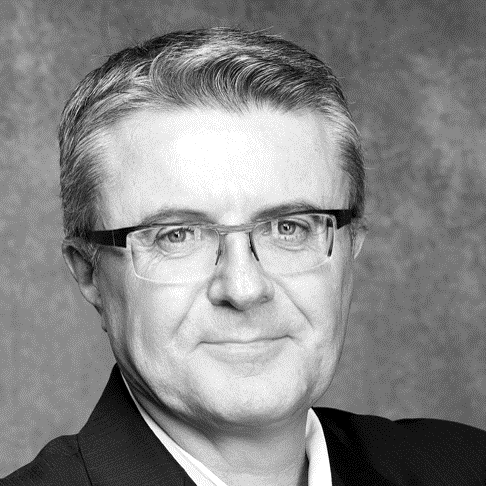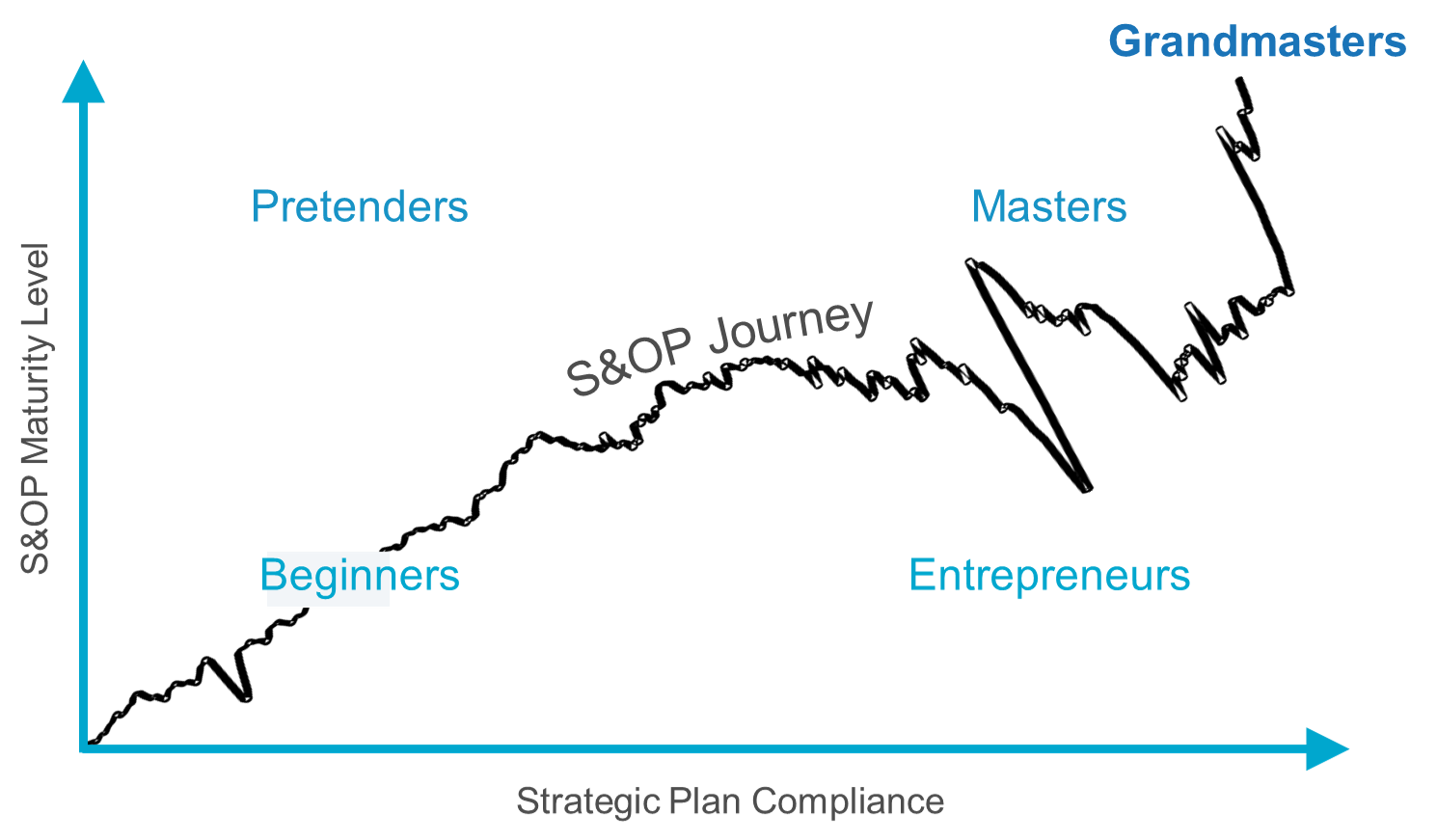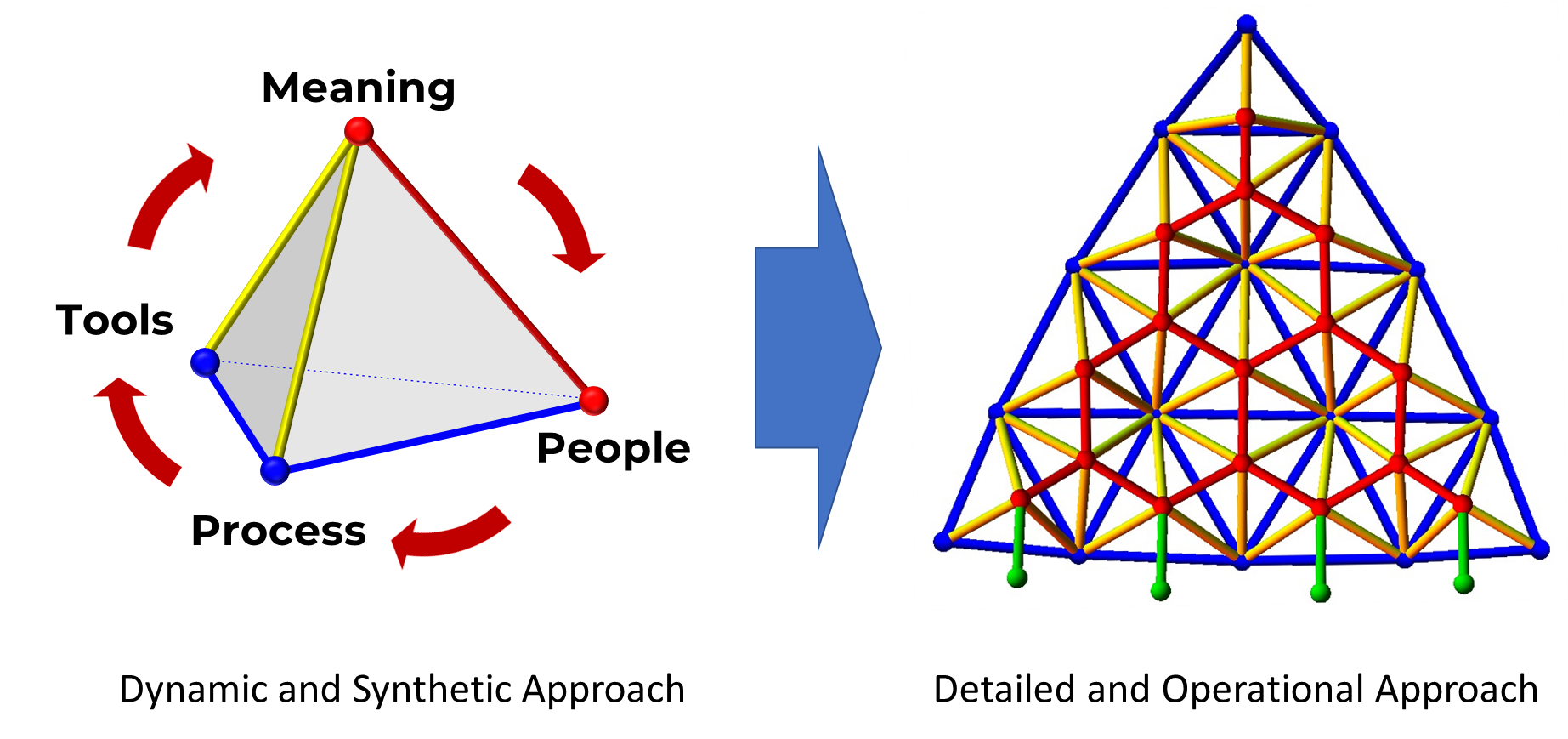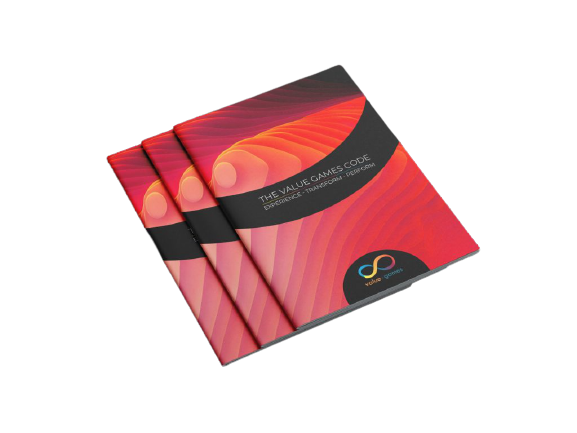Get in touch with us
1) My unexpected Journey in S&OP
During my 30 years’ experience in S&OP implementation, for 20 of them I was privileged to collaborate directly with Andy Coldrick, co-creator with Dick Ling of Breakthrough S&OP, sometimes called IBP. Andy was my master and friend, and among the immense knowledge he taught me on S&OP, the standout message is that S&OP is much more than a process: properly implemented, it is a way of working for the whole company that enables it to deploy dynamically its strategy, and consequently, S&OP should be fully customized to meet companies’ unique challenges.
During these 30 years, executing more than 200 implementations all over the world, I worked on S&OP with amazing companies like Bel, Coty, Danone, Eureden, Eurial, Ferrero, Florette, Mars, Nutrition & Santé, RG Brands, and Whirlpool to name a few. I learned from these industry leaders that there are no limits to S&OP performance. Why? Because the common characteristic of these organizations is their ‘healthy dissatisfaction’ mindset that drives them to push the boundaries of excellence.
The ‘level of complacency’ criterion has become, for me, a simple way to flag the level of S&OP maturity in an organization. True champions are always humble and always look for what they need to improve, never contemplating how beautiful they are. This applies to S&OP. When somebody tells me that “in my company, S&OP is working well”, I know it can be improved at least in the most important aspect: the commitment to breaking the status quo, and the curiosity to explore new territories.
2) The New Paradigm: People before Process & Tools
A second characteristic of these champions is to put a clear priority on people before process, and it is linked to the ‘healthy dissatisfaction’ attitude. Why ? Very simply because when you put people at the centre of your S&OP journey, you communicate the message that they are the most important asset in the company, and NOT an obscure gearing in a big machine. By putting people at the centre of your S&OP journey, you enthuse, engage and empower them to truly own this way of working. You help them to answer the three most important questions perfectly coined by Simon Sinek in his famous book and TED talk Start with WHY:
This looks like a lot of common sense, but in my experience, common sense is not so common in modern business. Even today, many companies fail to answer these three fundamental questions because they look at S&OP as a technical solution that is mainly about processes and tools. Why?
3) Learning from S&OP’s beginnings
I personally believe that the ‘over-processing’ of the S&OP journey is the result of its history. S&OP was born in the 1980s, a decade that glorified processes, which themselves were the avatars of a mechanical vision of the world invented in the 17th century by French philosopher René Descartes, globalized in the 18th century by economist Adam Smith in The Wealth of Nations, and transformed in the 19th century into a production system by the engineer Frederick Taylor.
Although Frederick Taylor passed away more than a century ago, and Taylorism as a production system was defeated more than 40 years ago by true Lean (which is about empowering and growing the work force) we still see today a ‘Taylorist’ vision of S&OP in many multinationals. The white collars and their wall to wall Teams or Zoom meetings, experience now what the blue collard endured before true Lean (as opposed to fake Lean which believes that the magic is in the processes and the tools).
Just ask your S&OP leader to explain how your company’s S&OP works and he or she will probably show you a process flow chart with boxes of inputs, outputs, agenda, and participants. Nothing about the soft part of S&OP, which is the most important part.
I have in mind what a VP Operations of a $10 billion business once told me: “I have implemented all the processes and tools, but people don’t apply them.” How come?
The answer lies in a dimension of multicultural management called ‘Universalism versus Particularism’. Universalistic cultures, mainly Anglo-Saxon countries, believe there is a universal truth, called the law, incarnated by processes and books of procedures.
Particularistic cultures like Latin, Middle Eastern, African, or Asian countries, believe the opposite, and prefer to follow principles and make them live through people-based connections. In other words, particularistic cultures, i.e., roughly 94% of the world’s population, put people over processes. A one-size-fits-all, process-driven vision of S&OP was born in the 1980s in the USA, one of the most universalist countries in the world. It had to adapt to an overwhelmingly particularistic world that desperately did not want ‘one-size-fits-all’ solutions, written in the tablets of stone of Class A S&OP, but instead living in the culture of the company.
4) The need for change in an uncertain world
Unsurprisingly, globalization and its terrible offspring the VUCA (Volatile, Uncertain, Complex, Ambiguous) environment, have accelerated the decline of a universalistic, process-driven vision of S&OP, and at the same time, the rise of customized, people-centric S&OP approaches. Therefore, the challenge for global companies is to resist the urge to standardize their S&OP processes, because that generates a dogmatic, single way of working with unclear benefits. Instead, the challenge for global companies, like ALL companies, is to implement a core operating model that’s as simple as possible, based on action principles, truly owned and applied by everybody, rather than detailed, inapplicable instructions that nobody really understands.






